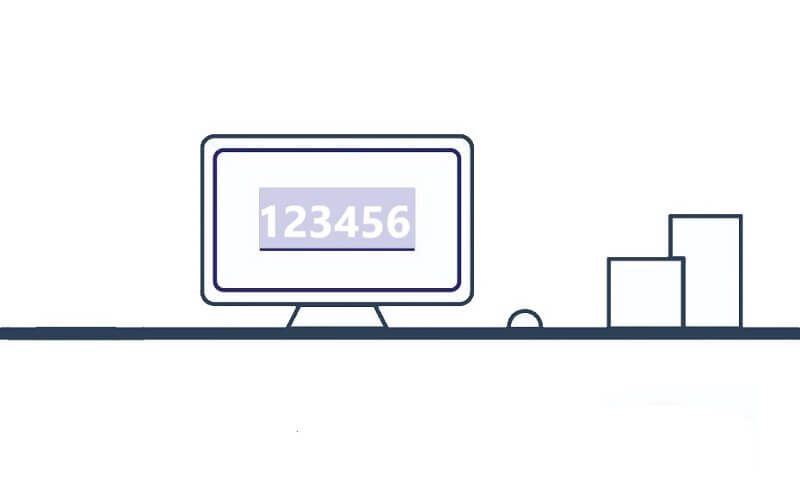Before learning what, a brute force attack is, how hackers are utilizing it and how to protect yourself from the brute force attack, one must first go through their passwords that about how many passwords one has or whether they are well protected or not. One must make sure that their password is strong and unique.
What is a brute force attack?
A brute force attack is the simplest method to gain access to a site or server which is password protected. It tries various combinations of passwords and usernames again and again until it gets in. A brute force attack is one of the most common attacks conducted against Web Applications.
Brute force attacks can be implemented by criminals to get access to encrypted data. A person might think that their passwords keep their information and data safe, but researchers have proved that any eight-character password can be cracked in less than six hours.
A brute force attack is an endeavor to unearth a password by meticulously testing every feasible combination of letters, numbers, and symbols before you unearth the one correct combination that works. If a website requires user authentication, you are a target for a brute force attack.
To perform a brute force attack, one must require:
- Determine the format of username
- Create a list of potential usernames
- Confirm which usernames are valid
- Test passwords for each valid username
Is brute force illegal?
Brute force attack itself is not illegal, but as with many things, it can be used illegally. You should consider any attack on a network or system for which you do not have permission as illegal.
How does brute force work?
The brute force attack is composed of an assailant yielding many passwords with the hope of ultimately guessing it right. The attacker systematically checks all possible passwords or passphrases until the correct one is found. Alternatively, the attacker can attempt to guess the key which is typically created from the password using a key derivation function.
Hackers motive behind the act:
Beyond the brute force attack, hacker’s incentive is to procure illicit approach to earmark website and make use of it in either executing another kind of attack or thieve valuable data or simply shut it.
A brute force search is an analytical adroitness in which you first conjure a possible candidate and then test its cogency.
Why are the brute force attacks difficult to detect?
Brute force attacks and the other different types of cyber-attacks that earmark HTTP can be difficult to discern and obstruct with standard network security tools like firewalls and other discernment frameworks.
Some of the ways are there that can be implemented to inhibit brute force attacks include: using a CAPTCHA program to detect automated attacks, instating rules requiring the use of strong passwords, introducing a delay in the log-in attempts or instead of all above mentioned ways there is one more essential way to inhibit brute force attack that is, using VPNs to establish an encrypted tunnel.
A Virtual Private Network can help prevent brute force attacks as well as Man-in-the-middle attacks, the Breach attacks and other threats that exploit website vulnerabilities.
Brute force attacks can be conducted in several ways. If the individual knows the length of the password, then every single combination of numbers, letters and symbols can be tried until a counterpart is found. However, the process is slow, as the length of the password increases.
Instead of trying many passwords against one user, one more method of brute force attack is to try one password against many usernames. This is thus known as reverse brute force attack.
Types of Brute Force attacks:
Simple brute force attack—uses a scientific approach to ‘guess’ that doesn’t have confidence outside logic.
Hybrid brute force attacks—starts from external logic to see that countersign variation could also be possible to succeed, and so continues with the easy approach to undertake several attainable variations.
Dictionary attacks—guesses usernames or passwords employing a lexicon of attainable strings or phrases.
Rainbow table attacks—a rainbow table may be a precomputed table for reversing cryptologic hash functions. It may be accustomed guess a operate up to a particular length consisting of a restricted set of characters.
Reverse brute force attack—uses a standard countersign or assortment of passwords against several attainable usernames. Targets a network of users that the attackers have antecedently obtained information.
Preventing brute force attacks
There are several techniques for preventing brute force attacks. The first step in preventing a brute force attack is to effectuate an account lockout policy. For example, after three failed log-in attempts, the account is locked out until the administrator unlocks it. The drawback of this step is that communal accounts can be locked out by one malignant user.
The second step towards the prevention of a brute force attack is to use a challenge-response test to prevent the non-manual submissions of the log-in page. This technique is effective but has accessibility concerns and affects the usability of the site.
Another important step towards brute force attack prevention should be password length. Many platforms or websites, nowadays enforce their users to create longer passwords of eight to sixteen-word limit.
Another important thing is to create complex and difficult passwords. Nowadays it is not recommended to create passwords like “ilovemycountry” or “ilovemyparents” or “password123456”, instead, your password should consist of UPPERCASE and lowercase alphabets and should also contain numbers and special characters.
Brute force attacks can take place online as well as offline. In case of any offline attack, the attacker has access to the encrypted material and tries different keys without the risk of discovery.
While in case of an online attack, the attacker entails interacting with a target system. In such cases, the system can counteract the attack by limiting the number of attempts that a password can be tried, introducing time delays between successive attempts, increasing the answer complexity and locking accounts.
You may also like:
How to protect yourself from phishing attacks
How Do Hackers Crack Your Password?
How to Protect Yourself from Ransomware?
Cryptojacking: Signs and how to prevent it
How to Avoid DDOS Attacks When Gaming?
Browser Hijacking: Signs and how to prevent it
How to Protect Yourself against Social Engineering?
How to Recognize and Protect Yourself from Riskware
The enterprising way to put an end to the brute force attacks starts with monitoring. A brute force attack against a coding system attempts to decode the coded data by a comprehensive catalog and trying encryption keys. Such an attack might be used when it is not possible to take advantage of other weaknesses in an encryption system that would make the task easier.






